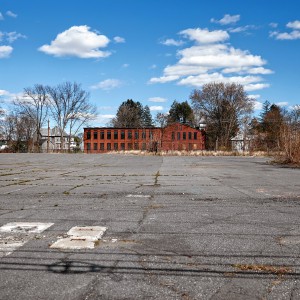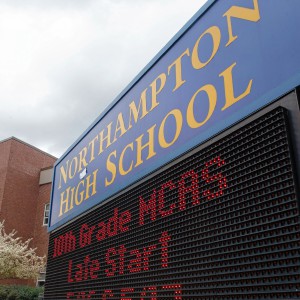Editorial: Monday mix on invasive species; cost of EpiPens; and fresh paint
| Published: 07-30-2017 11:40 PM |
A gathering considering climate change and invasive species last week at the University of Massachusetts Amherst sounded a warning about threats to New England.
About 100 experts gathered during the first regional invasive species and climate change symposium sponsored by the Northeast Climate Science Center. Scientists and conservationists are working to understand how invasive species will be affected as events such as droughts happen more often and carbon dioxide levels rise in the atmosphere.
“The take-home for the Northeast is that we’re going to be some of the losers when it comes to thinking about where the hotspots are in invasive plants,” said Jenica Allen, a University of New Hampshire ecology professor. That’s based on forecasting the likelihood that invasive species will move into new territory where they will flourish as the climate changes.
UMass Amherst environmental conservation professor Bethany Bradley said, “These climate changes are stressing the local ecosystems to the benefit of invasive species.” For example, the kudzu vine, which smothers other plants, may spread from the southern United States to New England if rising temperatures allow it to survive winters in the north.
The good news is that conservationists, scientists and government officials working together may help reduce the effects of invasive species. “We wanted to see how we could bring people together to learn from each other,” said Toni Lyn Morelli, an organizer of the symposium and a research ecologist with the Northeast Climate Science Center, which is hosted by UMass Amherst, supported by the U.S. Department of the Interior and managed by the U.S. Geological Survey.
“With some of these systems we have solutions,” said UMass Amherst entomology professor Joe Elkinton, whose research focuses on invasive forest insects. “These major pest systems can become no problems if we do the right thing.”
He cited the work done by state conservation officials and scientists more than a decade ago to control the population of winter moths. In 2005 and 2006, the UMass entomology department and state Department of Conservation and Recreation released hundreds of parasitic flies at Wompatuck State Park in Hingham. That helped reduce the number of winter moths so they are no longer destroying species like maple trees.
We hope that last week’s event encourages the experts to ratchet up their collaboration to protect native species.
Article continues after...
Yesterday's Most Read Articles
* * *
An amendment to the state budget sponsored by state Sen. Eric P. Lesser, D-Longmeadow, may well be a lifesaver. It establishes a bulk purchasing program for EpiPens.
Modeled after a similar program to reduce the cost of Narcan — an antidote to opioid overdoses — through bulk buying, the new initiative allows the state Department of Public Health to coordinate the bulk purchasing of the auto-injectors that administer epinephrine to stop life-threatening allergic reactions.
About 10,000 schoolchildren in Massachusetts have prescriptions for EpiPens, but rising costs make it difficult for some parents to buy them, according to Lesser, whose district includes Belchertown and Granby. The price has increased from $103.50 for two EpiPens in 2009 to $608.61 this year.
Many children have more than one EpiPen so they are handy at home and elsewhere, including school. The state will purchase the EpiPens and then provide them at the reduced price to local schools, camps and first responders.
The next step is raising money to pay for the bulk purchasing, through a state appropriation, contributions from cities and towns and private donors. We hope that fundraising is completed quickly so the EpiPens are put in the hands of people for whom they could mean the difference between life and death.
* * *
Congratulations to all who made Historic Northampton’s fence-painting project a success July 22.
“Good Neighbors Paint Good Fences” brought together more than 100 volunteers from throughout the Valley to paint the 300-foot fence on Bridge Street while raising money for new shutters at the museum’s Damon House. About 30 businesses and organizations sponsored sections of the fences and raised more than $10,000, said Laurie Sanders, co-executive director of Historic Northampton, who coordinated the project.
“We finished the whole fence in under an hour, and we had fun while doing it,” Sanders said. “This is a great community-building event. It’s all about working with good neighbors.”
The evidence of this 21st-century neighborliness is a bright, white fence alongside a museum where some of the city’s oldest treasures are kept.

 Columnist Andrea Ayvazian: Standing as witness to Armenian martyrs
Columnist Andrea Ayvazian: Standing as witness to Armenian martyrs Taylor Guss: Northampton's zoning should align with its climate goals
Taylor Guss: Northampton's zoning should align with its climate goals Guest columnist Bill Dwight: How to make sense of Northampton’s school budget dilemma
Guest columnist Bill Dwight: How to make sense of Northampton’s school budget dilemma Columnist Russ Vernon-Jones: Climate solutions tough, but can be done
Columnist Russ Vernon-Jones: Climate solutions tough, but can be done
